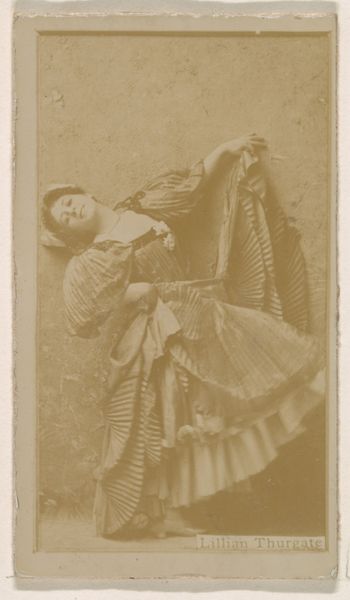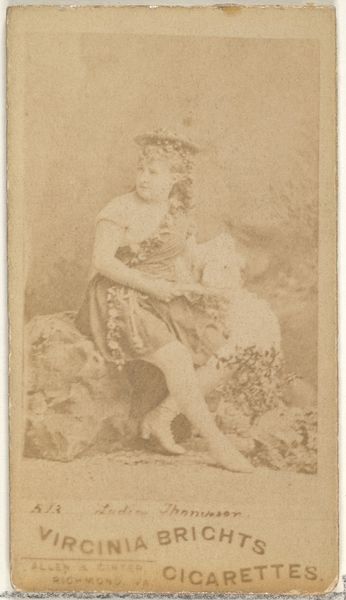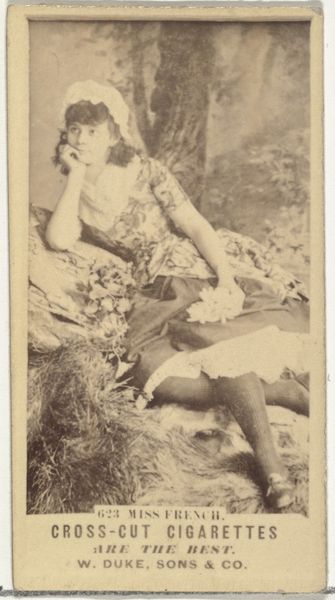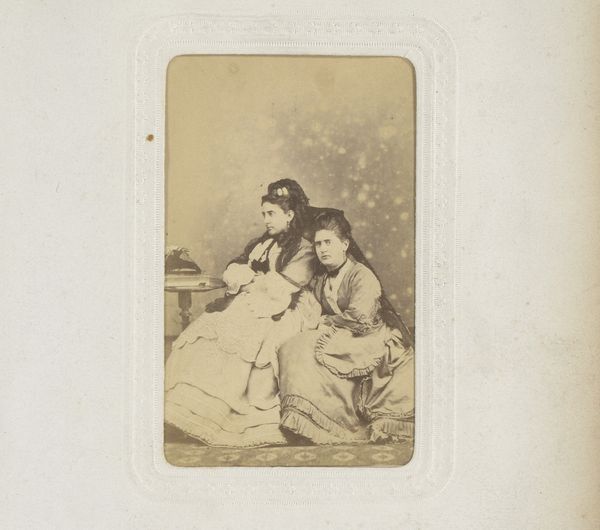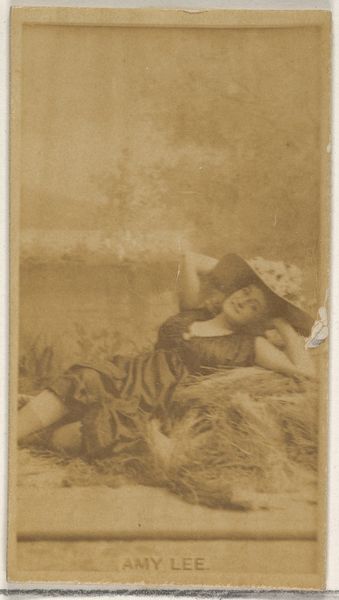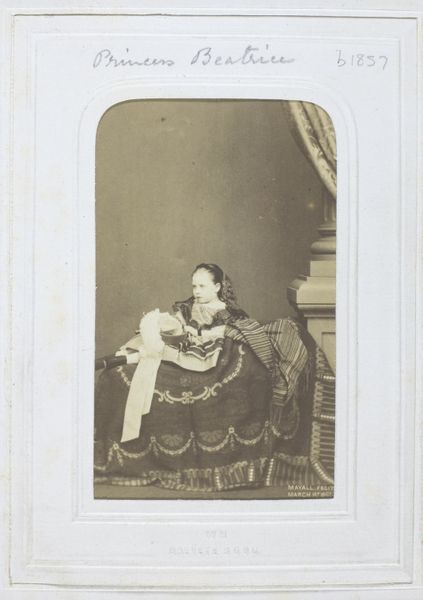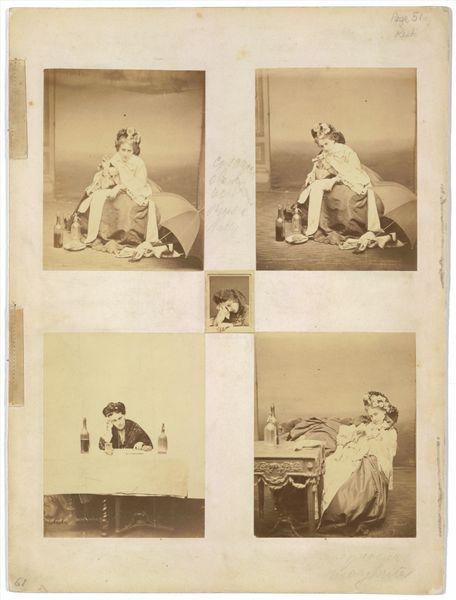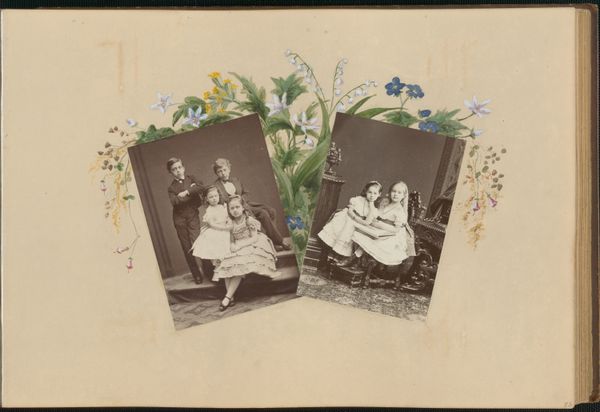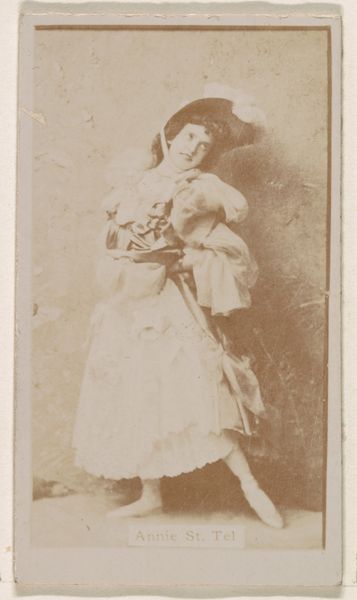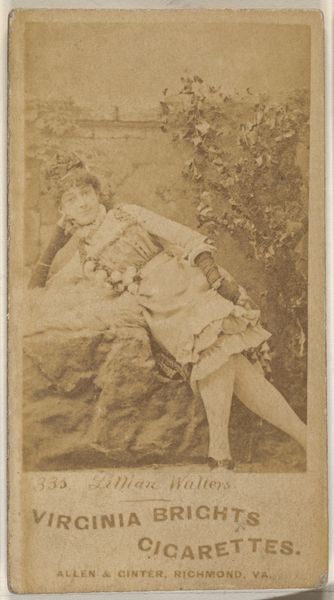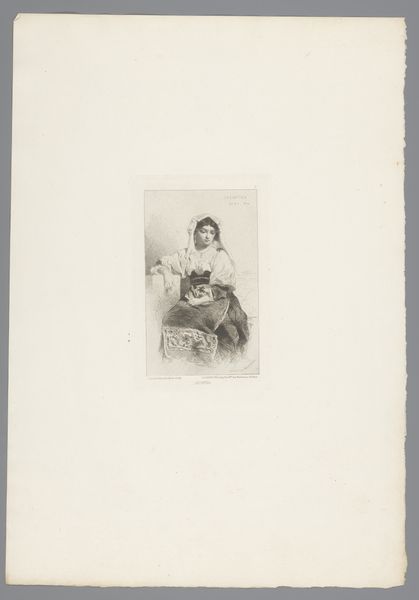![[Royal Children in Tableau of the Seasons] by Roger Fenton](/_next/image?url=https%3A%2F%2Fd2w8kbdekdi1gv.cloudfront.net%2FeyJidWNrZXQiOiAiYXJ0ZXJhLWltYWdlcy1idWNrZXQiLCAia2V5IjogImFydHdvcmtzL2Q3ZjY3MTQ3LTNhNzktNGMzNS04MDEzLWMzNWE5Y2YzYjI1ZS9kN2Y2NzE0Ny0zYTc5LTRjMzUtODAxMy1jMzVhOWNmM2IyNWVfZnVsbC5qcGciLCAiZWRpdHMiOiB7InJlc2l6ZSI6IHsid2lkdGgiOiAxOTIwLCAiaGVpZ2h0IjogMTkyMCwgImZpdCI6ICJpbnNpZGUifX19&w=3840&q=75)
#
portrait
#
toned paper
#
light pencil work
#
pencil sketch
#
charcoal drawing
#
charcoal art
#
child
#
pencil drawing
#
coffee painting
#
portrait drawing
#
watercolour illustration
#
watercolor
Dimensions: 15.5 x 16 cm (6 1/8 x 6 5/16 in.)
Copyright: Public Domain
Curator: Let’s turn our attention to this photograph, taken in 1854 by Roger Fenton, titled “[Royal Children in Tableau of the Seasons]”. It's currently held at the Metropolitan Museum of Art. Editor: My first impression is one of orchestrated calm. The muted tones, the posed children—it feels more like a classical painting than a candid shot, despite the photographic medium. Curator: Exactly. Photography in this era was often used to mimic established artistic conventions, primarily painting. Notice how the setting and the children's garments evoke a sense of idealized classicism, even theatricality. It places the British royal family into an allegorical tableau, reflecting Britain's cultural aspirations. Editor: Right, but look closer at the materials, it's more complex than mere imitation. It's a very involved photographic process to achieve this kind of tonality and depth. This wasn't just about capturing an image, it was about manipulating light and chemicals to create an object with tangible texture. I mean, look at the visible brushstrokes suggesting watercolor medium. Curator: True. The materiality does reveal the labor involved. However, the choice to present them as idealized figures within these constructed 'natural' backdrops underscores the monarchy’s intent to control their image and convey a message of cultural sophistication and continuity. It was very deliberate in promoting Victorian values through its portrayal of the Royal children. Editor: And what is so Victorian in the setting I see a fake pastoral idyll there. I see cheap backdrops propped behind royal kids, flowers likely wired into place; the "hand-made" aspects are visible, almost awkwardly so. You can see production and labor, like what happens backstage in theater: quite a lot, including these two children. How were they made to stay still for what was probably a very long exposure? That also counts as labor. Curator: It highlights the performance of royalty, as it has evolved into Victorian theater, where symbolism and presentation reinforce hierarchical power structures. Even in mimicking art, Fenton underscored its power. Editor: I agree; it’s a powerful image. By examining Fenton’s production and materials we begin to understand all these forces as intertwined. The photograph becomes evidence, of artistic skill and of cultural control in material form. Curator: Yes, and thinking about the social role of images during the period, and how this portrait contributed to crafting a public image, enriches the artwork itself.
Comments
No comments
Be the first to comment and join the conversation on the ultimate creative platform.
